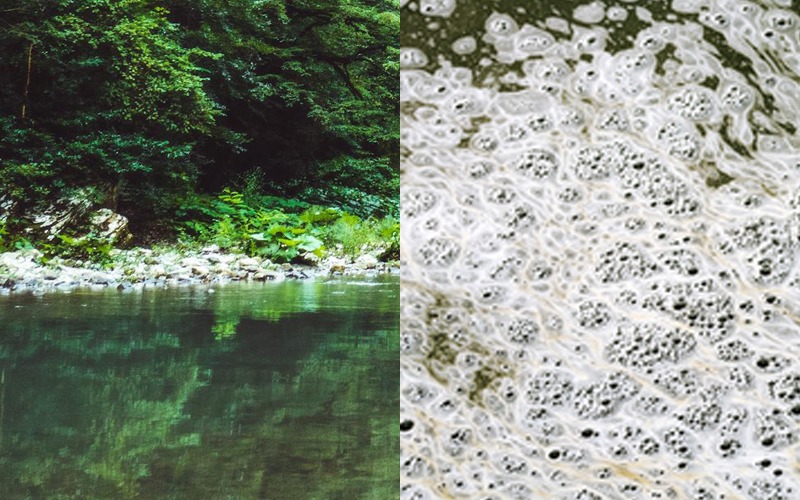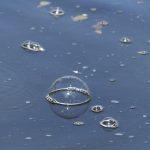You are here which means you may notice white foam or face problems with white foam in ponds. And most probably you don’t know how to get rid of white foam in the pond.
Well, to remove white foam in your pond, start by cleaning the water regularly. Scoop out debris like leaves and twigs using a net. Ensure proper aeration with a fountain or air pump to increase oxygen levels, which helps break down foam.
Check the pH levels and maintain them between 6.5 and 8.2, as extremes can cause foam. Use beneficial bacteria additives to balance the pond ecosystem and break down organic matter causing foam.
Avoid overfeeding fish, as excess food contributes to foam. Install a mechanical filter to trap particles and prevent foam formation. Lastly, consider adding barley straw or extract, a natural solution that controls algae and reduces foam.
Regular maintenance and a balanced ecosystem will help keep your pond water clear and foam-free. Today in this article we will show you
All In 1 Equipment For Cleaning And Regularly Maintainance A Pond
How Do I Get Rid Of Foam In My Pond Naturally
So today here in this article we will show you 9 easy steps to get rid of white foam in the natural ways from your ponds. Without wasting more time, let’s jump to the article.
Step 1: Identify the Cause
Before addressing the foam issue, it’s essential to identify the root cause. Potential reasons for foam in ponds include excess organic matter, nutrient imbalances, or inadequate aeration.
Conduct a thorough assessment of your pond to pinpoint the specific factors contributing to the foam.
Step 2: Remove Debris And Organic Matter
White foam often forms due to the decomposition of organic matter, such as fallen leaves, algae, or dead plants.
Regularly clean and remove debris from the pond’s surface using a skimmer net or a pond vacuum. This will prevent the buildup of organic materials that can contribute to foam formation.
Step 3: Balance Nutrient Levels
Excessive nutrients, particularly nitrogen and phosphorus, can lead to increased algae growth and foam production. Because of the imbalance in nutrient levels, your pond can have bubbles and white foam. By the way, if you don’t know how to get rid of bubbles in the pond then check our article.
Test your pond water for nutrient levels and consider using water treatments or adding aquatic plants to help absorb and balance nutrients naturally. This will discourage the development of foam-promoting algae.
Step 4: Proper Aeration
Inadequate oxygen levels in the pond can contribute to foam formation. Install aeration devices, such as pond aerators or fountains, to enhance oxygen circulation.
This will promote a healthier environment for fish and other aquatic organisms while reducing the likelihood of foam buildup.
Step 5: Check pH Levels
Imbalances in pH levels can impact water quality and contribute to foam formation. Test the pH of your pond water and make adjustments as needed. Most fish thrive in a pH range of 6.5 to 8.5. Use pH buffers or adjusters to maintain the optimal pH for your aquatic ecosystem.
Because of the imbalance of pH levels, your ponds can get white foams, bubbles, algae, and pond weeds. Anyway, if you don’t know how to get rid of weeds in a pond then follow our previous article.
Step 6: Introduce Beneficial Bacteria
Beneficial bacteria play a crucial role in breaking down organic matter and preventing the release of foam-inducing compounds. Using the same way you can also get rid of water lily pads from your ponds.
Consider adding beneficial bacteria products specifically designed for pond treatment. These bacteria will help maintain a balanced ecosystem by promoting the natural decomposition of organic materials.
Step 7: Regular Water Changes
Periodically replace a portion of the pond water to dilute any accumulated substances contributing to foam. Use a de-chlorinator if tap water is added, and ensure that the replacement water is well-balanced to maintain the overall health of the pond.
Step 8: Use Anti-Foaming Agents
In cases where foam persists despite other efforts, consider using anti-foaming agents designed for pond use.
These products can quickly break down and eliminate foam on the water’s surface. Follow the manufacturer’s instructions carefully to avoid any adverse effects on aquatic life.
Step 9: Monitor and Maintain
Consistent monitoring of your pond’s water quality and implementing routine maintenance practices are essential for long-term foam prevention.
Regularly inspect and clean filters, remove excess debris, and adjust water treatments as needed to ensure a healthy and balanced pond environment.
Frequently Asked Questions
Q: What causes white foam to form in a pond?
A: So why has my pond gotten white foam on it? Well, white foam in a pond is typically caused by the decomposition of organic matter, such as leaves or dead algae.
Additionally, excess nutrients like nitrogen and phosphorus, imbalances in pH levels, and insufficient aeration can contribute to foam formation. Identifying and addressing these factors is crucial for effective foam control.
Q: How can I determine the cause of white foam in my pond?
A: To determine the cause of white foam in your pond, conduct water tests for nutrient levels and pH, inspect for organic debris and evaluate aeration.
This comprehensive analysis will help identify specific factors contributing to the foam, guiding targeted corrective measures.
Q: What steps can I take to prevent the recurrence of white foam in my pond?
A: Preventing white foam recurrence involves regular debris removal, balancing nutrient levels through treatments or plants, maintaining proper aeration, adjusting pH as needed, and introducing beneficial bacteria.
Consistent monitoring and routine maintenance, tailored to the pond’s conditions, are essential for sustaining a healthy and balanced aquatic environment.
Q: Are there any environmentally friendly methods to get rid of white foam in a pond?
A: Certainly, environmentally friendly methods to eliminate white foam in a pond include introducing beneficial bacteria that break down organic matter, promoting natural water treatments, and incorporating aquatic plants to absorb excess nutrients.
These methods work to restore ecological balance without adverse effects on the pond’s ecosystem, fostering a sustainable and healthy aquatic environment.
Q: Can I use chemical treatments to quickly eliminate white foam in my pond?
A: Yes, chemical treatments like anti-foaming agents can quickly eliminate white foam in a pond. However, it’s crucial to use them cautiously, following instructions, to avoid harm to aquatic life. Chemical treatments are often considered a temporary solution while addressing underlying causes for long-term management.
Final Words
So, to eliminate white foam in a pond, identify its cause through water tests and inspection. Remove debris, balance nutrient levels, and enhance aeration. Adjust pH and introduce beneficial bacteria to prevent recurrence.
Consider eco-friendly methods like natural treatments and aquatic plants. Chemical treatments, if used, require caution to avoid harming aquatic life. Regular monitoring and maintenance are essential for a healthy pond.
Addressing the root causes, such as organic decomposition and nutrient imbalances, ensures a sustainable, clear pond environment while promoting the well-being of aquatic organisms.






